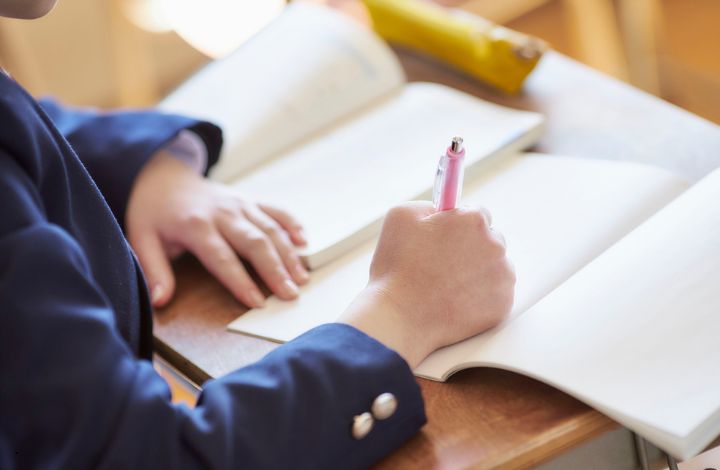Discover the meaning, origins, and lasting impact of “All Hands In”, a symbol of unity, teamwork, and shared energy across all settings.
Have you ever been in a moment when the whole group stops, sees each other, and spontaneously holds your hands together at a total speed? Maybe it was a game before the match, during the late evening project at college, or just before the presentation.
These simple tasks, hands stacked in the center, are what All Hands In is about: everyone together.
This is not just a phrase. It’s a symbol. One that reminds you how different we are, yet for that moment we are all one.
But what does All Hands In really mean? How did it evolve from a metaphor in workplaces and even a literal gesture in sports, to a motivating phrase? And more importantly, why does it resonate with people even today, across different teams and even cultures?
Let’s dive into the meaning, origin, comparisons, and practical methods of All Hands In, to bring unity and energy to your team, whether at work, on the field, or in your own family.
What Does “All Hands In” Mean?
The expression All Hands In is about unity and collective effort.
Literally, it describes the moment when everyone in a group places their hands together in a stack, usually followed by a shout. Think of basketball players before tip-off, or colleagues celebrating the start of a big project.
Roughly speaking, it means everyone is involved, engaged, and working toward the same goal.
It’s the emotional counterpart to saying:
- “We’re in this together.”
- “Let’s give it our best shot.”
- “Each of us now means something.”
I like to think of it as a human marker, the moment when individuals stop acting alone and start moving as one.
Where Does “All Hands In” Come From?
Interestingly, All Hands In doesn’t have centuries-old linguistic roots. Instead, it developed organically from team culture, where it became a ritual.
Picture this: sweat-drenched players form a circle, the coach gives a pep talk, then everyone puts their hands in, counts down, and shouts the team’s name. That moment binds the group. It’s no longer about strategy, it’s about heart.
Later, the workplace borrowed the term, inspired by its close cousin: “all hands on deck.”
- All hands on deck comes from naval language, meaning everyone is required on the ship’s deck for urgent tasks.
- All Hands In is softer and more inspiring. It’s less about duty, more about voluntary unity.
“All Hands In” vs “All Hands On Deck” vs “All-Hands Meeting”
People often confuse these phrases. Here’s a quick breakdown:
| Expression | Meaning | Common Contexts |
| All Hands In | Everyone unites together, symbolically or literally | Sports, team building, inspiring moments |
| All Hands on Deck | Urgent call for immediate contribution from everyone | Workplace, military, ships, emergencies |
| All-Hands Meeting | A meeting where the entire company/team is present | Business, corporate culture |
Among the three, All Hands In is the most symbolic and motivating.
Why “All Hands In” Still Resonates
I’ll be honest, when I first heard the expression in a work setting, I laughed. I thought, Really? Should we be doing a basketball chant in the office?
But over time, I realized how effective it was.
During a stressful product launch at a startup, our manager gathered us together. The deadline loomed, pressure was high, morale was shaky. He said, “All Hands In,” and stretched out his hand.
One by one, we stacked ours on top. We laughed, shouted the team’s name, and for a short moment, the stress faded.
Did it magically finish the project? No. But did it remind us we weren’t alone in the chaos? Absolutely.
That’s the subtle magic of All Hands In, a ritual that sparks belonging when stress or competition threatens to pull us apart.
How to Use “All Hands In” in Different Settings
1. In the Workplace
- Before a product launch or big presentation.
- During team-building exercises.
- To replace stiff corporate jargon with a human touch.
Instead of saying: “Let’s align our goals for this quarter,”
try: “All Hands In, this is our chance to see what we can do.”
2. In Sports & Group Activities
- Perfect for kids’ teams that need encouragement.
- Amateur leagues to build camaraderie.
- Even casual games like trivia nights or escape rooms.
3. In Personal Life
- Families can use it before road trips.
- Friends can do it before moving day or DIY projects.
- Couples can make it a playful ritual before tackling stressful situations.
The Psychology Behind “All Hands In”
Why does stacking hands feel so powerful? Psychology has answers:
- Physical Touch Increases Connection
- Touch releases oxytocin, the bonding hormone. Even a quick hand stack sparks connection.
- Touch releases oxytocin, the bonding hormone. Even a quick hand stack sparks connection.
- Shared Rituals Build Identity
- Rituals strengthen group identity. All Hands In is a mini-ritual that signals: We are one.
- Rituals strengthen group identity. All Hands In is a mini-ritual that signals: We are one.
- Synchronized Action Boosts Harmony
- When people move together (clapping, marching, chanting), it improves group cohesion and performance.
- When people move together (clapping, marching, chanting), it improves group cohesion and performance.
It’s not just cheesy symbolism, it’s neuroscience at work.
Common Misuses of “All Hands In”
Not every situation is right for it. For example:
- Dropping it casually in an email can confuse:
“Please, all hands in until Friday” doesn’t make sense. - Forcing the gesture in stiff corporate environments can feel awkward.
- Overusing it diminishes its power.
Think of it like hot sauce, great in moderation, overwhelming if you dump the whole bottle.
Case Studies: How “All Hands In” Boosts Morale
- Startup Hackathon: At 3 AM, exhausted but determined, the team stacked hands before coding their final feature. They didn’t win first place, but they bonded for life.
- Youth Football Team: My niece’s coach used All Hands In before every game. The kids loved it so much they started initiating it themselves.
- Corporate Retreat: At a leadership retreat, people rolled their eyes at first. But by the end, the final All Hands In was so loud you could feel the pride echo.
These stories show a truth: people may forget what you said, but they’ll remember how you made them feel. All Hands In makes people feel like they belong.
Practical Tips to Bring “All Hands In” Into Your Life
- Keep it authentic – don’t force it if you’re not comfortable.
- Pick the right moments – use it in times of pressure or transition.
- Make it inclusive – adapt for virtual teams (digital high-five, shared emojis).
- Tie it to purpose – don’t just say it, connect it with a goal.
“All Hands In” in the Digital Age
You might wonder: Can this still work in remote teams?
Yes, here’s how:
- Use a shared emoji reaction.
- Try a “virtual hand stack” on Zoom.
- Type “All Hands In!” in chat before starting.
It may feel silly, but silliness is part of the bonding magic.
Key Takeaway
- If there’s one thing I’ve learned, it’s this: gestures don’t need to be complicated to be powerful.
- All Hands In may seem simple, even childish, but it taps into something deeply human.
- We all want to feel part of something bigger. We all crave those shared moments when individuality melts into collective strength.
Additional Resources
Huddle: Concise overview of the huddle, its origins, and usage across sports, business, and group settings.
Rituals at Work: Teams That Play Together Stay Together : Research-backed insight from HBS on how rituals like “All Hands In” boost trust, belonging, and collaboration in modern workplaces.



